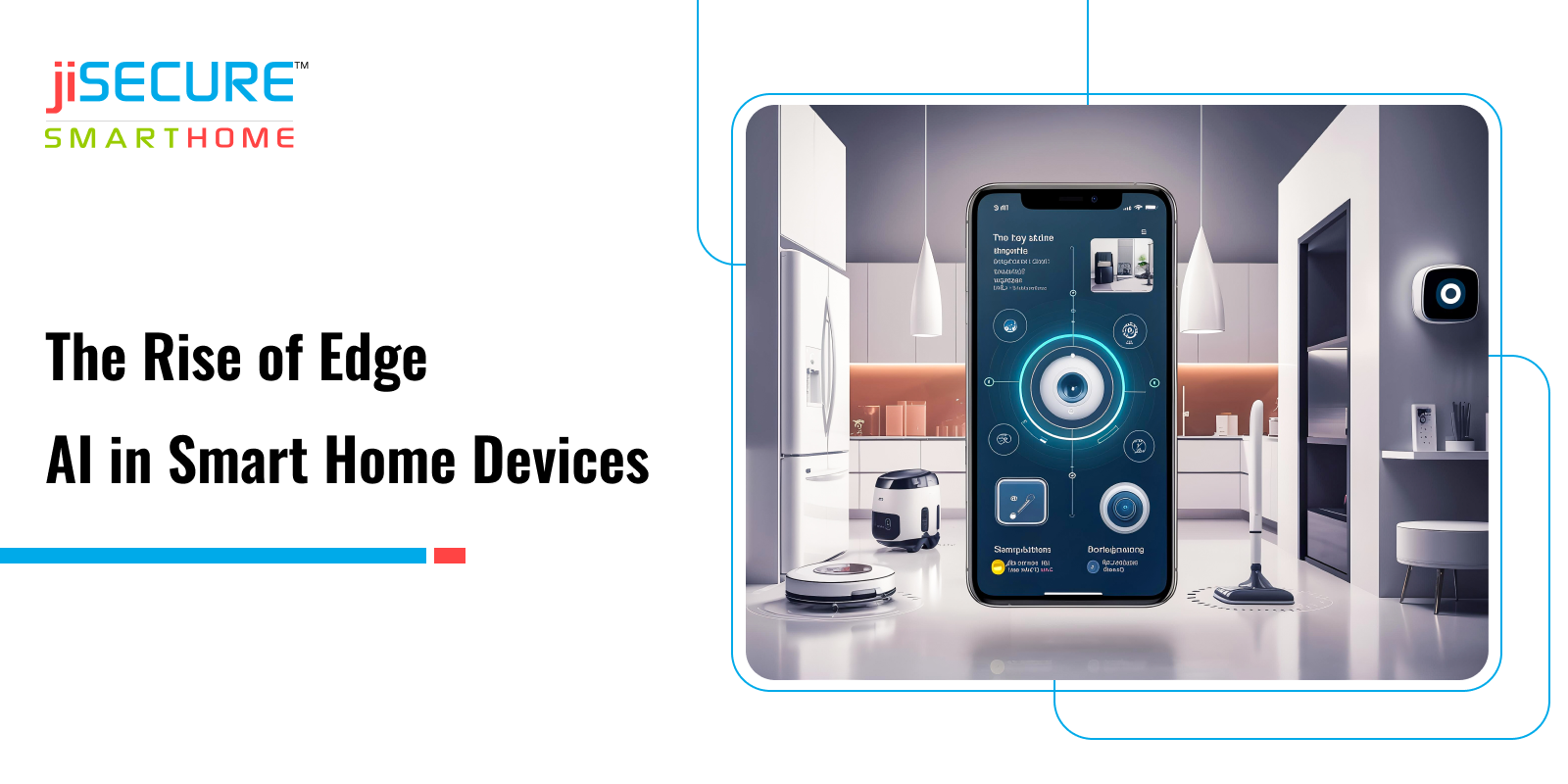Smart home technology has rapidly evolved over the past decade, offering consumers greater convenience, security, and efficiency. One of the most significant advancements in this field is the integration of Edge AI in Smart Home Devices. Unlike traditional cloud-based AI systems, Edge AI processes data locally on the device itself. This innovation is transforming Smart Home Automation, enabling faster response times, enhanced security, and improved privacy.
In this blog, we will explore how AI in Smart Home Devices is evolving through Edge AI, its benefits, applications, and how it is shaping the future of home automatio
What is Edge AI?
Edge AI is a form of artificial intelligence that processes data directly on a device rather than relying on cloud computing. This technology allows smart devices to analyze and respond to commands in real-time without depending on an internet connection. By reducing latency and improving security, Edge AI is becoming a game-changer for Smart Home Devices.
Edge AI uses advanced machine learning algorithms and neural networks to make autonomous decisions without sending sensitive user data to remote servers. This feature is particularly beneficial for Smart Home Automation, where speed and security are crucial.
Benefits of Edge AI in Smart Home Devices
1. Improved Response Time
Traditional smart home systems rely on cloud computing, which can lead to delays in executing commands. Edge AI eliminates this issue by processing data locally, ensuring instant response times for voice commands, motion detection, and automation routines.
2. Enhanced Privacy and Security
One of the biggest concerns with AI in Smart Home Devices is data privacy. Edge AI reduces the need to transmit data over the internet, minimizing exposure to cyber threats. Since data is processed locally, users have better control over their personal information.
3. Reduced Dependence on the Internet
Most Smart Home Devices require an internet connection to function. However, Edge AI reduces reliance on cloud-based services, allowing smart devices to operate even in offline mode. This feature ensures uninterrupted home automation and security.
4. Energy Efficiency
By reducing the amount of data transmitted to and from the cloud, Edge AI conserves energy and lowers operational costs. Smart thermostats, lighting systems, and appliances powered by Edge AI optimize energy usage based on real-time data analysis.
5. Scalability and Flexibility
Edge AI enables Smart Home Automation to become more scalable. Homeowners can integrate multiple AI-powered devices without overwhelming network bandwidth or experiencing delays in processing commands.
Applications of Edge AI in Smart Home Automation
1. Voice Assistants and AI-powered Devices
Smart speakers and voice assistants like Amazon Alexa, Google Assistant, and Apple Siri have already adopted Edge AI. These devices process voice commands locally, providing faster responses and ensuring better privacy protection.
2. Smart Security Systems
Edge AI enhances Smart Home Devices such as surveillance cameras, doorbell cameras, and motion detectors. AI-powered security cameras can recognize faces, detect unusual activity, and alert homeowners instantly without sending data to the cloud.
3. Intelligent HVAC and Climate Control
Edge AI enables smart thermostats and climate control systems to learn user preferences and adjust temperature settings accordingly. This capability not only enhances comfort but also reduces energy consumption.
4. Smart Lighting Systems
With Edge AI, smart lighting solutions can analyze real-time data to adjust brightness levels based on occupancy and natural light conditions. This feature enhances convenience and energy efficiency.
5. Automated Home Appliances
Refrigerators, washing machines, and other appliances integrated with Edge AI can perform tasks efficiently without requiring a cloud connection. For example, a smart fridge can suggest recipes based on available ingredients, while a washing machine can optimize wash cycles based on fabric type.
6. Advanced Home Entertainment Systems
Smart TVs and entertainment hubs use Edge AI to personalize content recommendations, recognize voice commands, and even optimize sound and display settings based on the user's preferences.
Challenges of Implementing Edge AI in Smart Home Devices
1. High Initial Cost
Edge AI-enabled Smart Home Devices often come with a higher price tag due to the advanced hardware and AI capabilities required. However, as technology advances, costs are expected to decrease.
2. Limited Processing Power
While Edge AI reduces the need for cloud computing, smart devices have limited processing capabilities compared to centralized AI models. Manufacturers are working on improving hardware efficiency to overcome this challenge.
3. Compatibility Issues
Not all smart home ecosystems support Edge AI technology. Homeowners may face compatibility issues when integrating new AI-powered devices with existing home automation systems.
4. Software Updates and Maintenance
Edge AI devices require regular software updates to enhance performance and security. Ensuring seamless updates without disrupting functionality remains a challenge for developers.
The Future of Edge AI in Smart Home Automation
The adoption of Edge AI in Smart Home Automation is set to grow exponentially. Here are some future trends:
AI-driven Predictive Maintenance: Smart home devices will use Edge AI to predict failures and schedule maintenance before issues arise.
Enhanced Personalization: AI algorithms will further refine user preferences, offering a highly personalized home automation experience.
Increased Adoption of 5G Technology: The rise of 5G networks will enhance the capabilities of Edge AI, enabling faster and more efficient smart home solutions.
Integration with IoT Ecosystems: More IoT devices will incorporate Edge AI, creating a seamless and interconnected smart home environment.
Conclusion
Edge AI is revolutionizing AI in Smart Home Devices, offering homeowners faster, safer, and more efficient Smart Home Automation. By processing data locally, this technology ensures enhanced privacy, reduced latency, and improved energy efficiency.
As the demand for Smart Home Devices continues to grow, companies like jiSecure are leading the way in providing unique and innovative smart home solutions. With cutting-edge technology and AI-powered automation, jiSecure is transforming the way people experience smart living.
The future of smart homes is here, and Edge AI is making it smarter than ever!

















Share this post on: